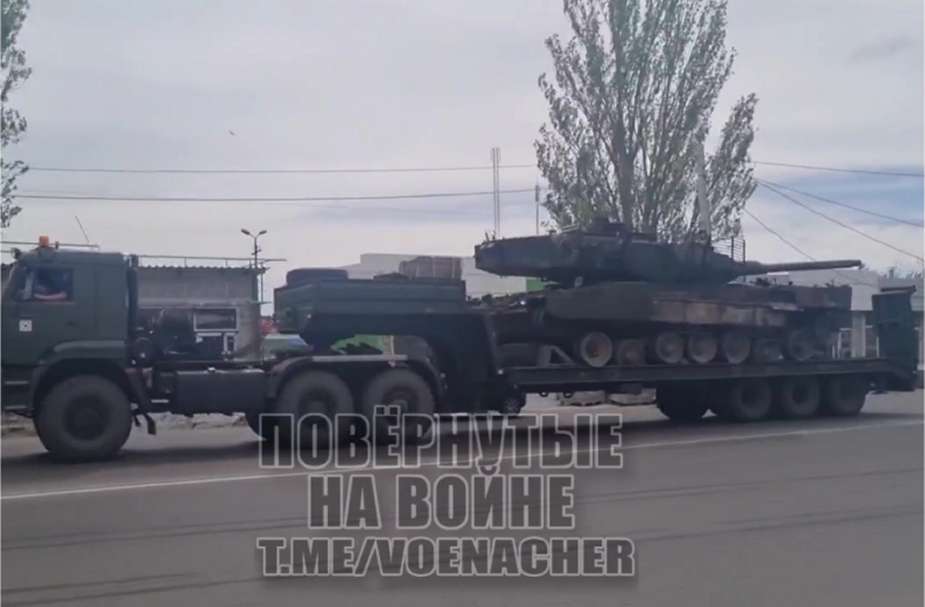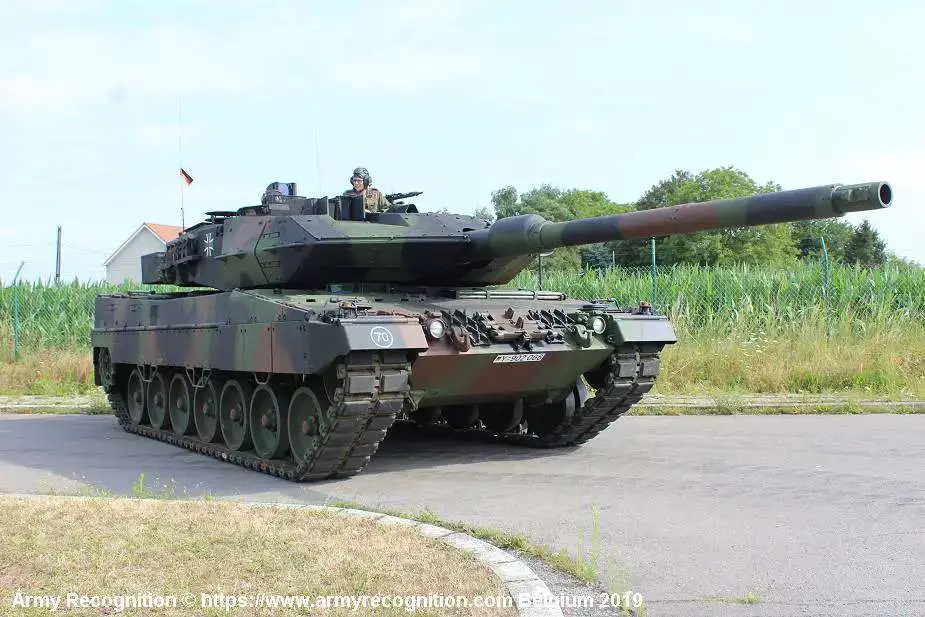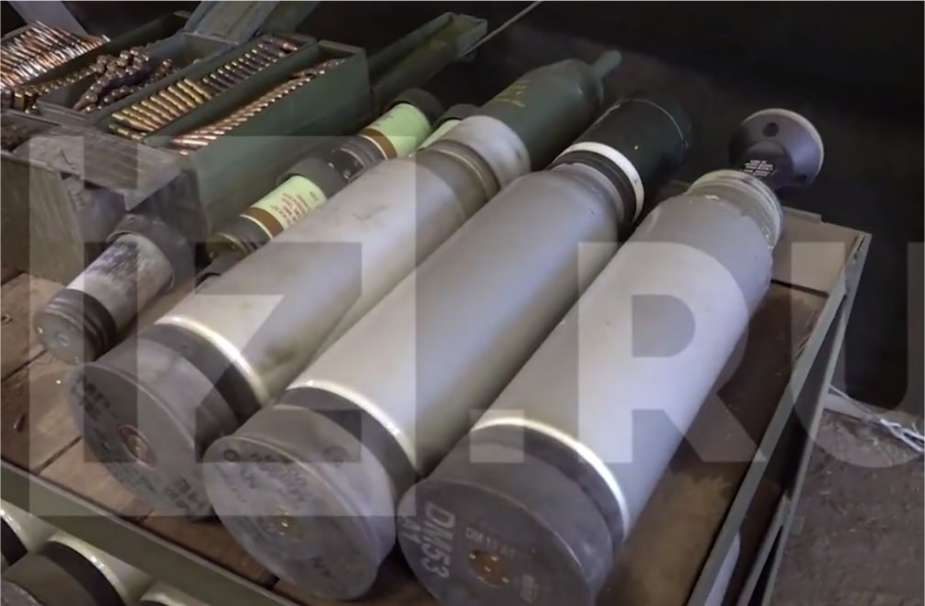First capture of Ukrainian Leopard 2A6 tank to upgrade Russian tanks
On April 21, 2024, video footage released by Russian media confirmed that Russian soldiers captured the first Leopard 2A6 tank supplied to Ukraine, which likely belonged to the 47th Mechanized Brigade of the Ukrainian Armed Forces. The captured tank, the most advanced model of the Leopard 2 tanks provided to Ukraine, is expected to undergo a detailed examination by the Russian military before being placed on public display.
Follow Army Recognition on Google News at this link

This Leopard 2A6 tank is likely the same one that was part of the 47th Mechanized Brigade of the Ukrainian Armed Forces, that was damaged or destroyed near the village of Avdiivka in October 2023. (Picture source: Russian media)
This Leopard 2A6 tank is likely the same one that was part of the 47th Mechanized Brigade of the Ukrainian Armed Forces, that was damaged or destroyed near the village of Avdiivka in October 2023. Still outfitted with its anti-drone grids, this tank could not be evacuated earlier due to its proximity to the front line, according to Russian sources. This delay is likely because Ukrainian drones quickly target and destroy the Russian vehicles tasked with towing captured or damaged equipment to safety. To facilitate its removal from the battlefield, Russian units reportedly used explosives to detach the Leopard’s tracks.
The German Leopard 2A6 main battle tank, an evolution from the Leopard 2A5, was first introduced by Krauss-Maffei Wegmann in 2001. This version is distinguished by its upgraded Rh 120 L55 120mm smoothbore cannon, which extends longer than the L44 gun used on previous models. This main weapon is supported by two 7.62 mm machine guns that serve as secondary armaments. The tank is designed to address a variety of combat situations effectively.
In terms of protection and operational capabilities, the Leopard 2A6 incorporates advanced modular armor that increases its resistance against various types of modern ammunition and threats. Powered by an MTU diesel engine, the tank achieves a maximum speed of roughly 68 km/h and can travel up to about 500 km without refueling, facilitating both strategic and tactical mobility. The tank is equipped with a sophisticated fire control system, which includes features like a laser rangefinder and thermal imaging, allowing for target engagement under various conditions. Additionally, the Leopard 2A6 is noted for its logistical efficiency and relative ease of maintenance, factors that support its operational readiness and contribute to reduced life-cycle costs.
The Leopard 2A6 features several technologies and systems that could be of interest for integration into modern Russian tanks such as the T-90M and T-80BVM Model 2023. One significant component is the Rheinmetall 120 mm L55 smoothbore gun, which is known for its longer barrel compared to those on Russian tanks. This feature could theoretically enhance the range and accuracy of Russian tanks if adapted for their use. The Leopard 2A6 also utilizes advanced composite armor and has an automated fire and explosion suppression system, which could offer improved protection compared to the current systems on Russian tanks. These features might be considered for adoption to enhance survivability in combat situations.

The Leopard 2A6 is considered as one of the most powerful main battle tanks in the world, in terms of firepower, mobility, and protection. (Picture source Army Recognition)
Moreover, the digital fire control system in the Leopard 2A6, which supports various ammunition types and provides precise targeting, represents a more modern solution than the systems typically installed in Russian tanks. This could potentially increase the operational effectiveness of Russian tanks. Additionally, the electronic systems encompassing communications, navigation, and sensor capabilities in the Leopard 2A6 are comprehensive and could improve the command and control capabilities of Russian tanks if integrated. Overall, adopting these technologies from the Leopard 2A6 could theoretically enhance the capabilities of Russian tanks, though the feasibility of such integrations would depend on numerous factors, including compatibility and adaptability of the systems.
The items recovered from this Leopard 2A6 and shown by the Russians include a full range of rounds, including the DM11 round, a 120mm cartridge that includes a programmable fuse, and an Insensitive High Explosive (IHE) warhead. The programmable fuse allows the round to be set for different detonation modes, such as airburst, which is effective against targets in cover or dispersed in the open. The DM11 is capable of engaging both non-armored and lightly armored targets, as well as infantry and field fortifications. It is designed for compatibility with the L55 gun of the Leopard 2A6, enhancing the tank's range and effectiveness. The round's modular design means that both its propulsion system and fuse can be replaced as needed, which can help reduce maintenance costs and extend its service life.
The video also shows that the Russians can now take a close look at the DM53 A1 round, which is the world's first temperature-independent high-performance tank ammunition. The DM53 A1 is a 120mm armor-piercing fin-stabilized discarding sabot (APFSDS) round produced by Rheinmetall. It is specifically engineered for use with the L55 tank gun, which features an extended barrel that contributes to a higher projectile speed. The DM53 A1 can reach a muzzle velocity of 1750 meters per second and has the capability to penetrate up to 750 mm of homogeneous armor from a distance of 2,000 meters. However, the key feature of the DM53 A1 is its temperature-independent propulsion system that maintains consistent ballistic characteristics across various temperatures, ensuring stable performance. The DM53 A1 utilizes a tungsten alloy penetrator, which is designed to effectively counter modern armored targets equipped with advanced defensive systems, such as the Kontakt-5 reactive armor.
However, despite these capabilities, Ukrainian forces have endured several losses of Leopard 2A6 tanks since their introduction into the conflict, with 6 Leopard 2A6 tanks confirmed as destroyed, 3 as damaged, and only two as damaged and abandoned. Engagements have seen Leopard 2A6 tanks being damaged or destroyed through various means, including mines, Kornet anti-tank guided missiles (ATGMs), and Vikr-1 missiles from Russian attack helicopters.
The ongoing conflict in Ukraine has seen an increase in incidents where Western-supplied advanced military equipment is destroyed or captured by Russian forces. Among the most notable examples of destruction or damage were the German Leopard 2A4, American M1A1 Abrams, Swedish Strv 122, and Challenger 2 tanks, the Patriot and Iris-T air defense systems, and the M142 HIMARS rocket launcher. Reports also indicate that some US-made weapons captured by Russian forces may have been transferred to Iran for potential analysis and reverse-engineering.
Russian forces have also displayed Western-supplied military equipment captured from Ukrainian forces at public exhibitions, including major military forums like the Army 2023 International Military-Technical Forum held in Patriot Park near Moscow. To date, captured military assets include the Swedish CV9040, German Marder 1A3, and US Bradley M2A2 infantry fighting vehicles, the American M113 armored personnel carrier, and the French AMX-10RCR reconnaissance vehicle.
Despite these setbacks, the European Union has committed approximately $5.5 billion for military aid to Ukraine, allowing for flexible arms purchasing to meet urgent needs. The United Kingdom has pledged over $3 billion for 2024, aimed at enhancing Ukraine's military capabilities with advanced drones and missiles. The United States has announced a $61 billion military aid package, continuing its support amidst internal funding challenges. Sweden has announced a $683 million aid package focusing on artillery and anti-tank weapons, while the Netherlands has allocated over €2 billion, largely for strengthening Ukraine's air defenses. Additionally, Spain has played a pivotal role in supplying a new batch of the older Leopard 2A4 tanks, which would enable the Ukrainian army to replace all the Leopard 2A4 tanks that have been destroyed or damaged by Russian forces since the start of the conflict.

The items recovered from this Leopard 2A6 and shown by the Russians include a full range of rounds, including the DM11 programmable round and the DM53 A1 round, which is the world's first temperature-independent high-performance tank ammunition. (Picture source: Russian media)























